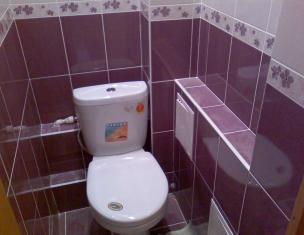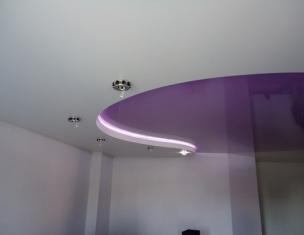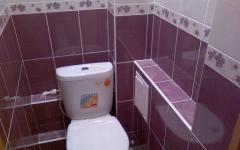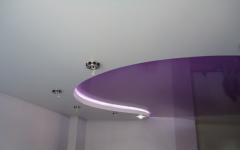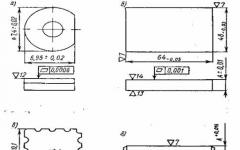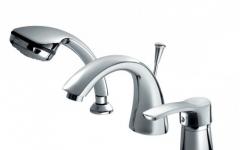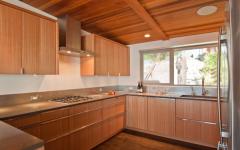Living in a country house has many advantages: fresh air, absence of neighbors, the opportunity to spend more time in nature and lead a healthy lifestyle. However, all these pleasures entail special requirements in the house itself, or more precisely in the interior of the premises.
The functional load on the hallway in a private house increases significantly. This is due to the fact that those living here usually have much more seasonal clothes and shoes. In addition to everyday outerwear, which is usually worn to work and school, there is also a set of clothes and shoes for home use in the yard. There is always a lot of work to maintain buildings, gardens and vegetable gardens in proper form. And just playing outside requires a change of clothes. Of course, all these clothes will be stored in the hallway, which is unlikely to decorate the design of the hallway in a private house.
In addition, there should also be a place for children's strollers, bicycles, skis, balls and household items. It’s good if there is a separate room for this in the garage or other outbuildings, or when the house has a second entrance, which is specifically intended for household needs. Then the main entrance hall serves only the functions of a front reception room, and its design is not much different from an ordinary city apartment.
Design requirements
All hallways in our apartments are rooms without windows, with the exception of pre-revolutionary houses. The dark and often narrow space that sees us off to a new day and welcomes our guests rarely allows us to place a spacious wardrobe, dressing table and bench in it. Most often, the elegance of the interior has to be abandoned in favor of functionality. How does the design of a hallway in a private house differ from a similar room in a city apartment?

Finishing materials for the hallway
Finishing materials that will be used in the hallways of private houses are subject to special requirements for strength, reliability, resistance to household chemicals and frequent wet cleaning. From the same point of view they choose color of finishing materials. This is the whole difficulty of creating an interior design for the hallways of a private house.
Walls
The hallway is the room into which everyone comes from the street. Outerwear is removed and stored there, which during periods of bad weather can be wet and dirty. Considering that in a private home there can be much more such clothing, the wall decoration should be made of durable materials that are resistant to wet cleaning. Many modern finishing materials meet these requirements.

Floors
The load on the floors of hallways in private houses is much greater than in city apartments, which is why such floors are washed much more often. This is what puts in the first place such requirements for floors as moisture resistance and resistance to household chemicals.

Ceiling
Finishing the ceilings in the hallway is not much different from such work throughout the rest of the house. Typically used
- whitewash;
- decorative plaster;
- painting;
- wallpaper;
- ceiling tiles;
- suspended ceiling;
- suspended ceiling.
Lighting
 In the hallways of city apartments there are usually no windows, so it is very important to choose the right artificial lighting. In a private house, especially if it is made of wood, providing daylight lighting is not a problem. To do this you just need to make a window. Another option is a glazed front door, but for this you need to be sure of reliable security of the house.
In the hallways of city apartments there are usually no windows, so it is very important to choose the right artificial lighting. In a private house, especially if it is made of wood, providing daylight lighting is not a problem. To do this you just need to make a window. Another option is a glazed front door, but for this you need to be sure of reliable security of the house.
Daylighting is best supplemented with several spotlights on the ceiling and local lighting near the mirror and built-in cabinets.
The overhead light will provide uniform illumination of the entire interior, and wall lamps and sconces will create additional comfort. When installing suspended ceilings, some are used LED strips for lighting.
Color spectrum
Despite the fact that the hallway in a private house carries a large functional load and is not easy to keep it clean, you should not choose dark colors for decorating this room. For large rooms, it is important to follow the rule that the floor should be darker than the walls, and the walls should be darker than the ceiling. This will create the illusion of large space.
If the hallway is spacious enough, then you can use any color scheme that will match the overall stylistic design of the house.
Furnishings and interior details
 Having completed the finishing work, you can think about furniture. Furnishings made of natural wood look solid, but in a room where there will be frequent events. wet cleaning, outerwear and shoes are stored, such furniture will quickly fail. High humidity can cause cabinet doors to become damaged and decorative surfaces to become stained.
Having completed the finishing work, you can think about furniture. Furnishings made of natural wood look solid, but in a room where there will be frequent events. wet cleaning, outerwear and shoes are stored, such furniture will quickly fail. High humidity can cause cabinet doors to become damaged and decorative surfaces to become stained.
The most acceptable option is furniture made of laminated chipboard and MDF. It is easy to care for, it is not expensive and, if necessary, can be easily repaired. Objects with forging elements look good in hallways. What furniture should be present at the entrance to the house?
Closet
It could be a regular closet or closet. It is important that it accommodates several sets of seasonal clothing. It should have a shelf for hats and several drawers for storing scarves, scarves and gloves. If the hallway is very small, then you can equip it with a regular hanger and a small chest of drawers or a console with a drawer. Hats and other small items can be placed on high shelves or mezzanines.
Shoe shelf
The shelf can be either open or closed. The main thing is that the shoes are put away in a closed shelf, clean and well-dried, and that the shoe rack itself is well ventilated. In the same piece of furniture, it is good to provide space for storing shoe care products.
Bench
Many people put on their shoes exclusively while sitting, for this you need to provide seating area, it can be a soft chair, a bench or a small sofa, it all depends on the size of the room.
Mirror
To save space, you can mirror one of the cabinet doors. You can place it above the console or chest of drawers. In any case, it should be there. It is advisable to arrange additional lighting above it.
Examples of interiors of hallways of private houses can be seen in photos on the Internet and brought to life in your home.

















